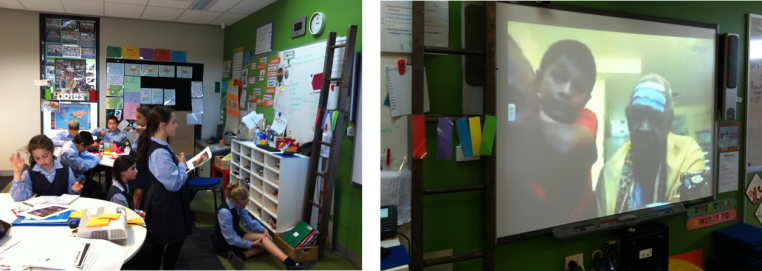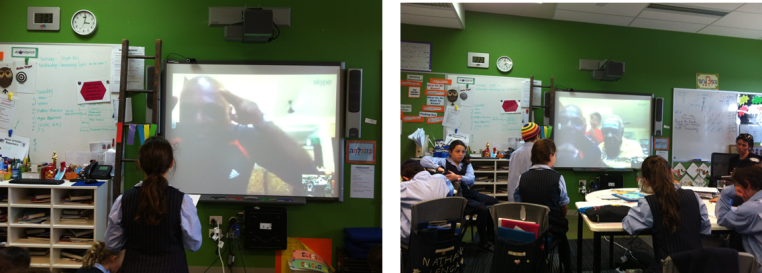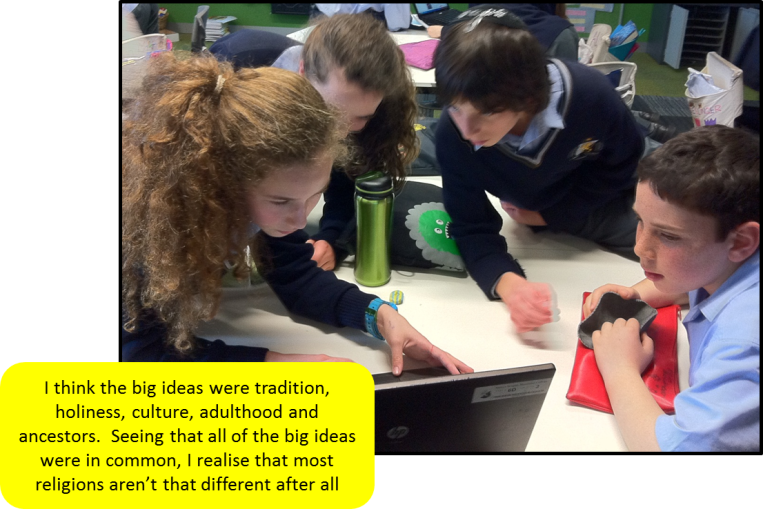‘Do you have any questions?’
‘No, Ma’am’.
I’m interacting via Skype with Grade 8 students in a SOME session at Ashraya Neelbagh, a residential school for children of migrant labourers near Bangalore and, to my surprise, I’m not finding it all that easy!
When I first began to interact with Indian kids in this way, it took a while to overcome the obstacles, to understand their context and to adjust my expectations. You can read about my early sessions with SOLEs and SOMEs here and here. Once past that initial stage , my experience of such sessions with SOLES in the past couple of years has usually involved a bunch of enthusiastic, noisy children gathered around the computer, often all talking at once. In one case, it led to a series of valuable learning interactions between some of my own students in Australia and a group at a rural school in Shiragon, 100kms from Goa. Despite the differences in language, environment, culture, economic background, and religion, they found much in common.
This is the first time I have worked with a group in an organized setting such as Ashraya, and it feels more like a school class… albeit a very different type of class than the ones I am used to in my own setting. The children sit in rows on the floor, listen attentively and respond when spoken to with a ‘Yes Ma’am’ or ‘No Ma’am’. They look towards Rajkumar, the volunteer facilitator on their end, every now and again for clarification or reassurance or both.
In my first two sessions, I call them to the camera one by one and ask them individual questions about their families, their favorite subjects at school and the festivals they recently celebrated. They respond willingly and I make a few notes beside their names on my list to help me personalise our connections. I notice 14-year-old Marlinga, right away. He tells me he loves Maths because it’s like a game. It’s different from the other answers, which are polite, short and to the point. He’s the only one who really responds when I ask why a particular subject is their favourite. Is it because his English is better than theirs? Or is he is just a little more confident than the others in interacting with this strange, foreign woman?
When I ask if they have any questions for me, they say ‘No ma’am .’ I share pictures of Australian animals which they appear to enjoy. I show them where I am on the map compared to where they are and they answer my questions about their area. I show them photos of kids at my own school. They seem interested, but have no questions. I am a bit at a loss as to where to head next. I wonder what interests them and how to move past their polite responsiveness.
We talk about games and they tell me what sports they play. They mention a game I am unfamiliar with, and Marlinga tries to explain. When I ask if it’s played with a ball, he says yes and there is a bit of quiet laughter. I ask if they can share what’s funny and after a little resistance, they reveal, with help from Raj, that it is not played with a ball. He has simply said yes, because it’s easier than trying to explain. They show me the sort of stone they actually use and when I laugh, they all laugh with me and the ice seems to have broken… for now. I ask them to demonstrate the game. They get up and kick the stone around, laughing and chattering as they show me. I feel optimistic, but I know that next time they will be back on the floor in rows, listening, waiting and responding politely…
I need to be respectful of their context and of cultural expectations. Communication is somewhat restricted by language limitations, differences in accent and the Skype connection. But I know I need to find ways to get them to relax a little (me too) , to ask questions and to engage in a two-way conversation. And I know I can’t do this the way I would at my own school…












